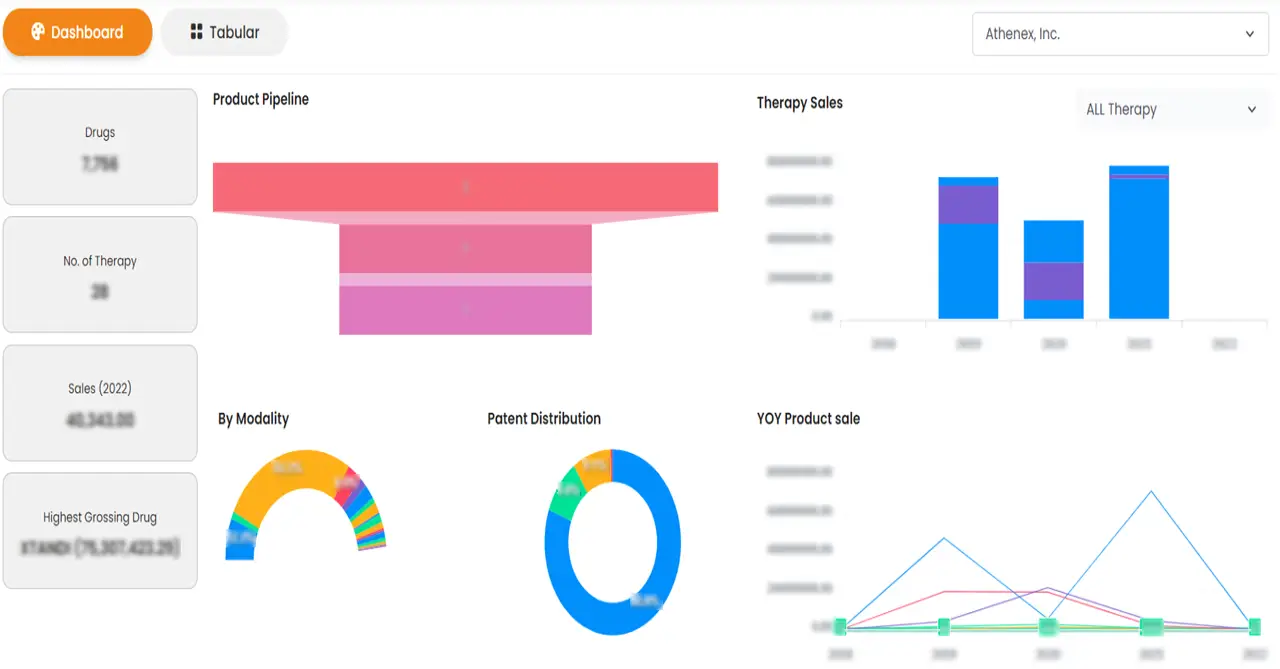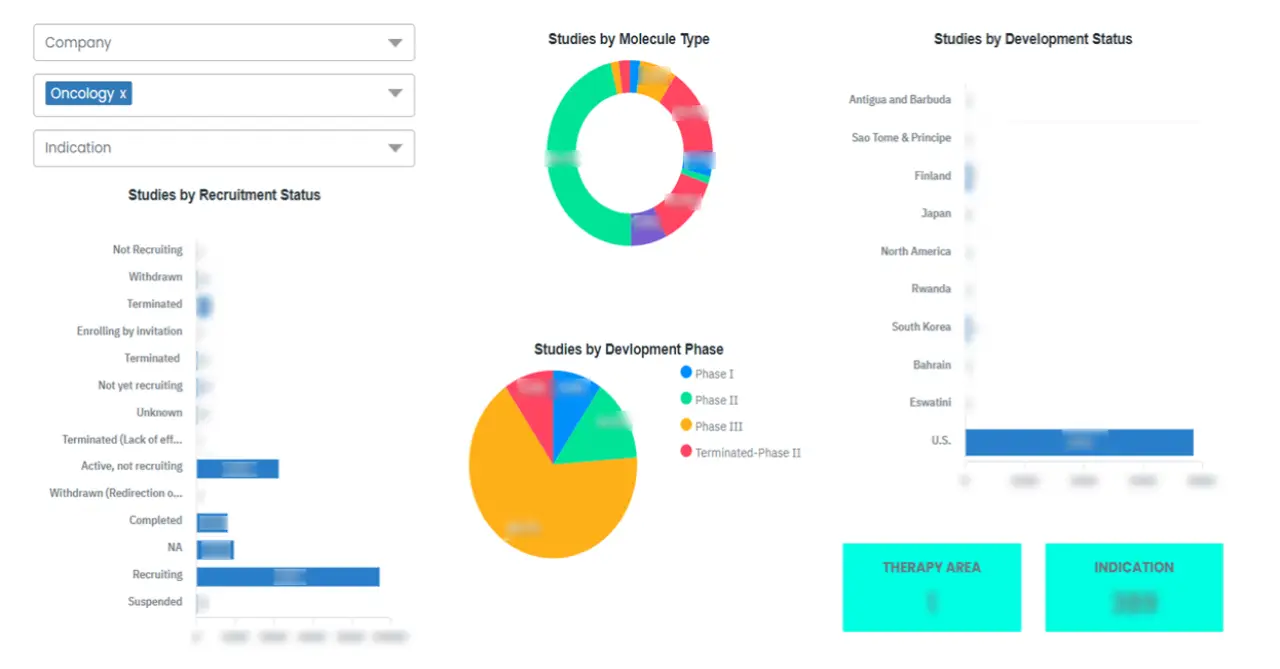Global Alpha Thalassemia Market
Tamanho do mercado em biliões de dólares
CAGR :
% 
 USD
742.04 Million
USD
1,193.62 Million
2024
2032
USD
742.04 Million
USD
1,193.62 Million
2024
2032
| 2025 –2032 | |
| USD 742.04 Million | |
| USD 1,193.62 Million | |
|
|
|
>Global Alpha Thalassemia Market Segmentation, By Type (Alpha Thalassemia Silent Carrier, Alpha Thalassemia Carrier, Haemoglobin H Disease, Alpha Thalassemia Major, and Others), Diagnosis (Chorionic Villus Sampling, Amniocentesis, and Others), Treatment (Frequent Blood Transfusions, Chelation Therapy, Stem Cell Transplant, and Others), End-Users (Hospitals, Specialty Clinics, Home Healthcare, and Others), Distribution Channel (Direct Tender, Hospital Pharmacy, Retail Pharmacy, Online Pharmacy, and Others) – Industry Trends and Forecast to 2032
Alpha Thalassemia Market Analysis
The alpha thalassemia market focuses on diagnosing and treating this inherited blood disorder, characterized by reduced or absent alpha-globin production. This condition can vary in severity, from silent carriers to severe cases such as alpha thalassemia major, which often requires lifelong management. Key diagnostic methods include chorionic villus sampling and amniocentesis, aiding in early detection, especially in at-risk populations. Treatments typically include blood transfusions, chelation therapy to manage iron overload, and advanced options such as stem cell therapy. Market growth is driven by increasing awareness, technological advancements in genetic testing, and the development of innovative treatments. Recent developments highlight gene therapy and novel drug therapies as promising avenues for more effective, long-term management. The market's end-users, including hospitals, specialty clinics, and home healthcare providers, increasingly rely on diverse distribution channels, such as hospital pharmacies and online platforms, ensuring wider patient access to treatment options.
Alpha Thalassemia Market Size
The global alpha thalassemia market size was valued at USD 742.04 million in 2024 and is projected to reach USD 1,193.62 million by 2032, with a CAGR of 6.12% during the forecast period of 2025 to 2032. In addition to the insights on market scenarios such as market value, growth rate, segmentation, geographical coverage, and major players, the market reports curated by the Data Bridge Market Research also include depth expert analysis, patient epidemiology, pipeline analysis, pricing analysis, and regulatory framework.
Alpha Thalassemia Market Trends
“Genetic Testing and Prenatal Diagnostics”
The alpha thalassemia market is evolving as advancements in genetic research enhance understanding and treatment of this blood disorder, characterized by reduced alpha-globin production. A key trend driving market growth is the rise in genetic testing and prenatal diagnostics, enabling earlier and more accurate identification of the condition. Innovation is focused on gene therapy and novel treatments to offer potentially curative solutions, which could transform patient outcomes, particularly for severe forms such as alpha thalassemia major. The market is also expanding due to increased awareness and a growing emphasis on patient-centered care, with treatment options becoming more accessible through varied channels such as hospital pharmacies and online platforms, especially in regions with high disease prevalence.
Report Scope and Alpha Thalassemia Market Segmentation
|
Attributes |
Alpha Thalassemia Key Market Insights |
|
Segments Covered |
|
|
Countries Covered |
U.S., Canada and Mexico in North America, Germany, France, U.K., Netherlands, Switzerland, Belgium, Russia, Italy, Spain, Turkey, Rest of Europe in Europe, China, Japan, India, South Korea, Singapore, Malaysia, Australia, Thailand, Indonesia, Philippines, Rest of Asia-Pacific (APAC) in the Asia-Pacific (APAC), Saudi Arabia, U.A.E., South Africa, Egypt, Israel, Rest of Middle East and Africa (MEA) as a part of Middle East and Africa (MEA), Brazil, Argentina and Rest of South America as part of South America. |
|
Key Market Players |
Novartis AG (Switzerland), Cipla (India), Zydus Group (India), Teva Pharmaceutical Industries Ltd. (Israel), Alkem (India), Sun Pharmaceutical Industries Ltd. (India), Taro Pharmaceutical Industries Ltd. (U.S.), Merck & Co., Inc. (U.S.), Incyte (U.S.), Gamida Cell (Israel), Bristol-Myers Squibb Company (U.S.) |
|
Market Opportunities |
|
|
Value Added Data Infosets |
In addition to the insights on market scenarios such as market value, growth rate, segmentation, geographical coverage, and major players, the market reports curated by the Data Bridge Market Research also include depth expert analysis, patient epidemiology, pipeline analysis, pricing analysis, and regulatory framework. |
Alpha Thalassemia Market Definition
Alpha thalassemia is a genetic blood disorder caused by mutations or deletions in the genes responsible for producing alpha-globin, a component of hemoglobin. This deficiency in alpha-globin disrupts normal hemoglobin production, leading to reduced oxygen transport in the blood and resulting in symptoms such as fatigue, weakness, and, in severe cases, complications such as anemia, organ damage, and growth delays. The condition ranges in severity, from silent carriers who show no symptoms to alpha thalassemia major, a life-threatening form that requires intensive medical intervention.
Alpha Thalassemia Market Dynamics
Drivers
- Rising Awareness and Screening Programs
Increased awareness about inherited blood disorders, such as alpha thalassemia, is significantly driving market growth, particularly as health organizations and governments emphasize early diagnosis. Educational campaigns and resources have improved public understanding, prompting more individuals to seek genetic screening, especially in regions with a high prevalence of alpha thalassemia. Government-backed screening programs, often integrated into prenatal care and community health initiatives, play a crucial role in identifying cases early, reducing the severity of symptoms through timely intervention. This trend supports market expansion by increasing demand for diagnostic tools and treatments, as early detection fosters proactive, ongoing patient care and management.
- Advances in Genetic Testing
Improved genetic testing techniques, such as chorionic villus sampling and amniocentesis, have significantly advanced the diagnosis of alpha thalassemia, enabling early and precise identification of the condition. These prenatal diagnostic methods allow healthcare providers to detect genetic abnormalities in the fetus, leading to earlier intervention and better management of the disorder. Early diagnosis is crucial for reducing complications and improving patient outcomes, particularly for severe cases of alpha thalassemia. As a result, the demand for advanced genetic testing is growing, driving the market for diagnostic tools and treatments, as timely intervention can prevent the progression of symptoms and enhance quality of life.
Opportunities
- Development of Gene Therapy
The development of gene therapy for alpha thalassemia holds significant market potential by offering curative treatments, particularly for severe forms of the disease, such as alpha thalassemia major. By targeting the underlying genetic mutations, gene therapy aims to restore normal hemoglobin production, potentially eliminating the need for lifelong blood transfusions and other ongoing treatments. As gene therapy progresses from clinical trials to real-world applications, it opens up new treatment avenues that could transform patient outcomes. This innovation offers long-term solutions for patients and drives market growth by attracting investment and expanding therapeutic options in the alpha thalassemia market.
- Targeted Drug Development
Continued research into novel drug therapies, particularly iron chelation treatments and stem cell-based therapies, presents significant opportunities in the alpha thalassemia market. Iron overload, a common complication in thalassemia patients due to frequent blood transfusions, can lead to serious health issues such as organ damage. Iron chelation therapies aim to remove excess iron, improving long-term health outcomes. Additionally, stem cell-based therapies, including bone marrow transplants, offer the potential for more effective treatments and even curative solutions for severe cases. These advancements provide new avenues for managing complications, creating growth opportunities for pharmaceutical companies to develop and market innovative therapies for alpha thalassemia patients.
Restraints/Challenges
- Complexity in Treatment Management
Managing alpha thalassemia, especially in its severe forms, presents significant challenges due to the complex nature of the condition. Patients often require a multidisciplinary approach involving hematologists, genetic counselors, transfusion specialists, and other healthcare providers to coordinate care effectively. One of the primary challenges is managing complications such as iron overload, which results from frequent blood transfusions. This requires continuous monitoring and the use of iron chelation therapies. Additionally, ensuring consistent access to specialized treatments, such as stem cell transplants or gene therapy, remains difficult, particularly in resource-limited regions, creating barriers to optimal patient outcomes. This complexity in management is a major challenge in the alpha thalassemia market.
- High Cost of Treatment
The ongoing costs associated with treating alpha thalassemia, including blood transfusions, iron chelation therapy, and stem cell transplants, are substantial and can impose a significant financial burden on both patients and healthcare systems. For many individuals, especially in low- and middle-income countries, the high cost of these treatments is a major barrier to access. Frequent blood transfusions and long-term iron chelation therapy require continuous care, which can be unaffordable over time. Additionally, stem cell transplants, though potentially curative, are expensive and not widely accessible. This economic burden hinders optimal care and treatment outcomes, limiting the overall market growth.
This market report provides details of new recent developments, trade regulations, import-export analysis, production analysis, value chain optimization, market share, impact of domestic and localized market players, analyses opportunities in terms of emerging revenue pockets, changes in market regulations, strategic market growth analysis, market size, category market growths, application niches and dominance, product approvals, product launches, geographic expansions, technological innovations in the market. To gain more info on the market contact Data Bridge Market Research for an Analyst Brief, our team will help you take an informed market decision to achieve market growth.
Alpha Thalassemia Market Scope
The market is segmented on the basis of type, diagnosis, treatment, end-users, and distribution channel. The growth amongst these segments will help you analyse meagre growth segments in the industries and provide the users with a valuable market overview and market insights to help them make strategic decisions for identifying core market applications.
Type
- Alpha thalassemia silent carrier
- Alpha thalassemia carrier
- Haemoglobin H disease
- Alpha thalassemia major
- Others
Diagnosis
- Chorionic villus sampling
- Amniocentesis
- Others
Treatment
- Frequent blood transfusions
- Chelation therapy
- Stem cell transplant
- Others
End-Users
- Hospitals
- Specialty clinics
- Home healthcare
- Others
Distribution Channel
- Direct tender
- Hospital pharmacy
- Retail pharmacy
- Online pharmacy
- Others
Alpha Thalassemia Market Regional Analysis
The market is analysed and market size insights and trends are provided by country, type, diagnosis, treatment, end-users, and distribution channel as referenced above.
The countries covered in the market report are U.S., Canada and Mexico in North America, Germany, France, U.K., Netherlands, Switzerland, Belgium, Russia, Italy, Spain, Turkey, Rest of Europe in Europe, China, Japan, India, South Korea, Singapore, Malaysia, Australia, Thailand, Indonesia, Philippines, Rest of Asia-Pacific (APAC) in the Asia-Pacific (APAC), Saudi Arabia, U.A.E., South Africa, Egypt, Israel, Rest of Middle East and Africa (MEA) as a part of Middle East and Africa (MEA), Brazil, Argentina and Rest of South America as part of South America.
North America holds the largest market share for alpha thalassemia due to its substantial healthcare spending and robust research and development activities. The region’s advanced healthcare infrastructure and significant investments in medical innovation contribute to the widespread availability of treatments. Additionally, ongoing R&D initiatives drive the development of novel therapies, further solidifying its dominance in the market.
Asia-Pacific region is projected to capture the largest market share in the alpha thalassemia market in the coming years, driven by advancements in medical technology and rising healthcare spending. Increased investment in healthcare infrastructure and improved access to treatments contribute to market growth. Additionally, the growing awareness and focus on genetic testing further support the region's dominance in the market.
The country section of the report also provides individual market impacting factors and changes in regulation in the market domestically that impacts the current and future trends of the market. Data points such as down-stream and upstream value chain analysis, technical trends and porter's five forces analysis, case studies are some of the pointers used to forecast the market scenario for individual countries. Also, the presence and availability of global brands and their challenges faced due to large or scarce competition from local and domestic brands, impact of domestic tariffs and trade routes are considered while providing forecast analysis of the country data.
Alpha Thalassemia Market Share
The market competitive landscape provides details by competitor. Details included are company overview, company financials, revenue generated, market potential, investment in research and development, new market initiatives, global presence, production sites and facilities, production capacities, company strengths and weaknesses, product launch, product width and breadth, application dominance. The above data points provided are only related to the companies' focus related to market.
Alpha Thalassemia Market Leaders Operating in the Market Are:
- Novartis AG (Switzerland)
- Cipla (India)
- Zydus Group (India)
- Teva Pharmaceutical Industries Ltd. (Israel)
- Alkem (India)
- Sun Pharmaceutical Industries Ltd. (India)
- Taro Pharmaceutical Industries Ltd. (U.S.)
- Merck & Co., Inc. (U.S.)
- Incyte (U.S.)
- Gamida Cell (Israel)
- Bristol-Myers Squibb Company (U.S.)
Latest Developments in Alpha Thalassemia Market
- In January 2024, the U.S. FDA granted approval for Casgevy, a CRISPR-based therapy, for its second indication: the treatment of transfusion-dependent beta thalassemia in patients aged 12 and older. This approval follows its previous authorization in December 2023 for the treatment of sickle cell disease. Casgevy's expanded approval marks a significant advancement in gene-editing therapies for blood disorders, offering new hope for patients with these conditions
- In August 2022, the U.S. FDA approved Zynteglo (beti-cel) as the first curative gene therapy for patients with beta thalassemia who require regular red blood cell transfusions. This approval represents a major breakthrough, offering the potential for long-term relief from transfusion dependence. Zynteglo uses gene editing to address the root cause of beta thalassemia, providing a transformative treatment option for patients
- In June 2021, the U.S. FDA granted breakthrough therapy designation to Rusfertide (PTG-300) as a potential treatment for polycythemia Vera. This designation recognizes its ability to reduce erythrocytosis in patients who do not require additional treatments for thrombocytosis or leucocytosis. The approval highlights Rusfertide's promising role in managing this rare blood disorder by targeting the underlying causes of excessive red blood cell production
- In April 2022, Himalaya Wellness Company partnered with the Sankalp India Foundation to provide support for thalassemia patients, focusing on offering a permanent curative option. This collaboration aims to facilitate bone marrow transplants, which can potentially cure the disease. By joining forces, the two organizations seek to improve access to life-changing treatments for thalassemia patients in need
SKU-
Obtenha acesso online ao relatório sobre a primeira nuvem de inteligência de mercado do mundo
- Painel interativo de análise de dados
- Painel de análise da empresa para oportunidades de elevado potencial de crescimento
- Acesso de analista de pesquisa para personalização e customização. consultas
- Análise da concorrência com painel interativo
- Últimas notícias, atualizações e atualizações Análise de tendências
- Aproveite o poder da análise de benchmark para um rastreio abrangente da concorrência
Metodologia de Investigação
A recolha de dados e a análise do ano base são feitas através de módulos de recolha de dados com amostras grandes. A etapa inclui a obtenção de informações de mercado ou dados relacionados através de diversas fontes e estratégias. Inclui examinar e planear antecipadamente todos os dados adquiridos no passado. Da mesma forma, envolve o exame de inconsistências de informação observadas em diferentes fontes de informação. Os dados de mercado são analisados e estimados utilizando modelos estatísticos e coerentes de mercado. Além disso, a análise da quota de mercado e a análise das principais tendências são os principais fatores de sucesso no relatório de mercado. Para saber mais, solicite uma chamada de analista ou abra a sua consulta.
A principal metodologia de investigação utilizada pela equipa de investigação do DBMR é a triangulação de dados que envolve a mineração de dados, a análise do impacto das variáveis de dados no mercado e a validação primária (especialista do setor). Os modelos de dados incluem grelha de posicionamento de fornecedores, análise da linha de tempo do mercado, visão geral e guia de mercado, grelha de posicionamento da empresa, análise de patentes, análise de preços, análise da quota de mercado da empresa, normas de medição, análise global versus regional e de participação dos fornecedores. Para saber mais sobre a metodologia de investigação, faça uma consulta para falar com os nossos especialistas do setor.
Personalização disponível
A Data Bridge Market Research é líder em investigação formativa avançada. Orgulhamo-nos de servir os nossos clientes novos e existentes com dados e análises que correspondem e atendem aos seus objetivos. O relatório pode ser personalizado para incluir análise de tendências de preços de marcas-alvo, compreensão do mercado para países adicionais (solicite a lista de países), dados de resultados de ensaios clínicos, revisão de literatura, mercado remodelado e análise de base de produtos . A análise de mercado dos concorrentes-alvo pode ser analisada desde análises baseadas em tecnologia até estratégias de carteira de mercado. Podemos adicionar quantos concorrentes necessitar de dados no formato e estilo de dados que procura. A nossa equipa de analistas também pode fornecer dados em tabelas dinâmicas de ficheiros Excel em bruto (livro de factos) ou pode ajudá-lo a criar apresentações a partir dos conjuntos de dados disponíveis no relatório.















